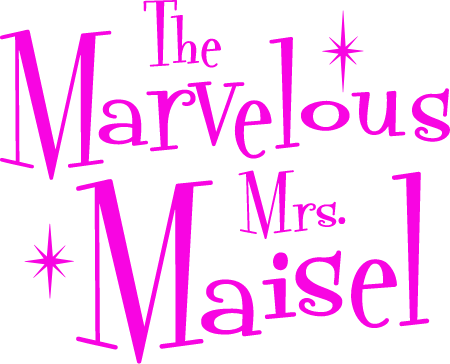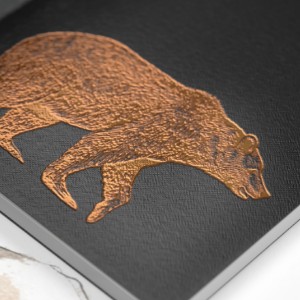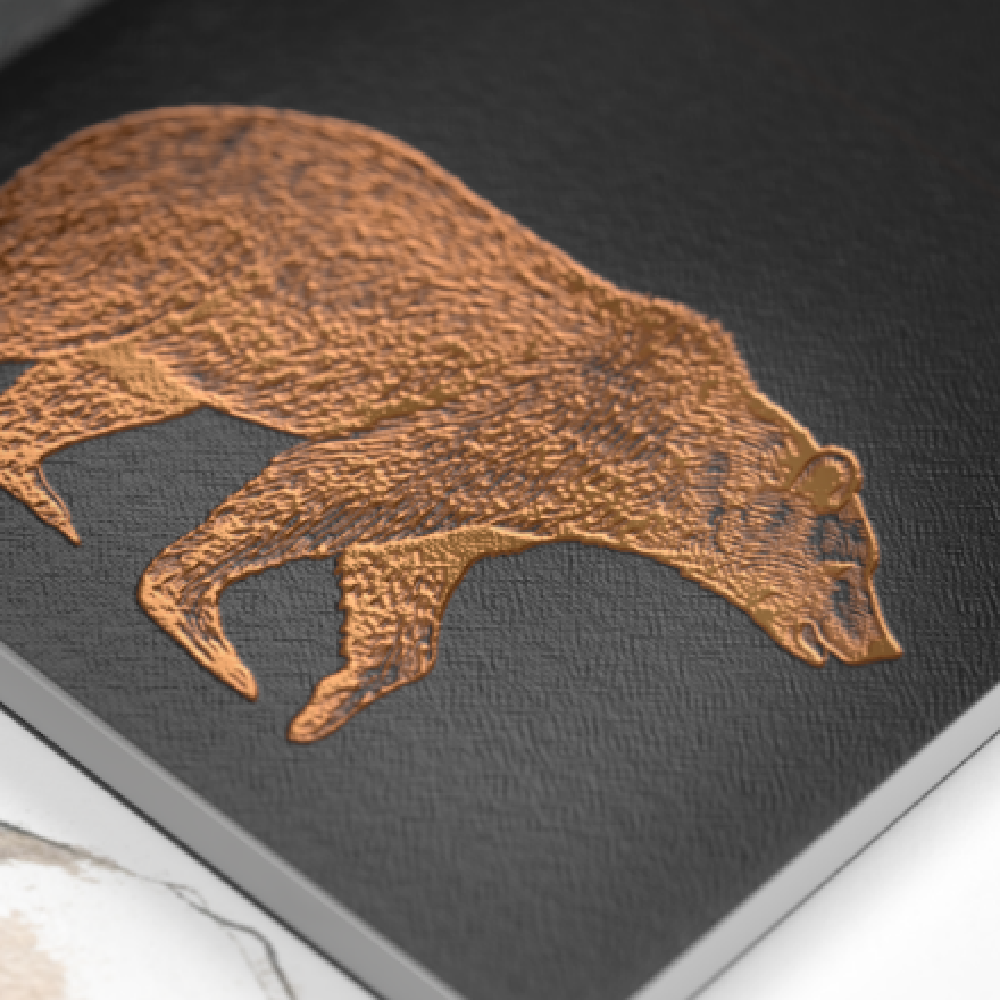There’s a reason show business is often called “magic.” It takes teamwork and a shared vision to create new worlds that entertain and delight.
On a big-budget production like The Marvelous Mrs. Maisel, the clothing alone is a powerful storytelling vehicle. But the sets, lighting, and camera work that complement the custom-made costumes for each actor help bring this world to life.
In this episode, we talk with the visual design team of Amazon’s Emmy Award-winning series (which just completed its fifth and final season) — Costume Designer Donna Zakowska and Cinematographer David Mullen. They share the complexities of a large team working together to create historically accurate scenery and wardrobes for a diverse cast of characters.
As the champion of teamwork, Adobe is changing the world through digital experiences. Empower your team to do its best work through Adobe solutions — learn how in the webinars below.
Show notes
The Power of Teamwork is brought to you by Adobe and hosted by Garrett Schwartz.
Disclaimer: The views and opinions expressed by guests are their own and their appearance on this podcast does not imply an endorsement of them or any entity they represent.
There’s a reason show business is often called “magic.” It takes teamwork and a shared vision to create new worlds that entertain and delight.
On a big-budget production like The Marvelous Mrs. Maisel, the clothing alone is a powerful storytelling vehicle. But the sets, lighting, and camera work that complement the custom-made costumes for each actor help bring this world to life.
In this episode, we talk with the visual design team of Amazon’s Emmy Award-winning series (which just completed its fifth and final season) — Costume Designer Donna Zakowska and Cinematographer David Mullen. They share the complexities of a large team working together to create historically accurate scenery and wardrobes for a diverse cast of characters.
As the champion of teamwork, Adobe is changing the world through digital experiences. Empower your team to do its best work through Adobe solutions — learn how in the webinars below.
Show notes
The Power of Teamwork is brought to you by Adobe and hosted by Garrett Schwartz.
Disclaimer: The views and opinions expressed by guests are their own and their appearance on this podcast does not imply an endorsement of them or any entity they represent.
The Power of Teamwork Season 1, Episode 6
“When Specialization Meets Collaboration” — The Marvelous Mrs. Maisel
Host: Garrett Schwartz, Product Marketing Manager, Adobe
Guests: Donna Zakowska, Costume Designer; David Mullen, Cinematographer
Transcript
Donna Zakowska
I like being on a team. I think I originally began as a painter and I loved painting, but there was something so isolated about it. I think that’s an important thing that you feel connected to something bigger than yourself.
Garrett Schwartz
Show business is often called magic. The team behind The Marvelous Mrs. Maisel television show makes that magic happen in each season of the show. The team creates a world on screen. It looks just like New York City in the late 1950s and early 1960s. That’s no easy task.
Donna Zakowska
It really is important to feel that sense of unity about the common goal.
Garrett Schwartz
That’s costume designer Donna Zakowska. She works closely behind the scenes with two key collaborators, production designer Bill Groom and cinematographer David Mullen. In this episode, Donna and David take us behind the cameras to show us how highly specialized teams in costume design, set making, and cinematography make the vibrant world of The Marvelous Mrs. Maisel come to life on screen.
Can you start off by explaining the role of a costume designer?
Donna Zakowska
A costume designer is someone who tells a story with clothing and helps to sort of reinforce the character that is in the script and provides a visual momentum for the story.
Garrett Schwartz
David, what is the role of a cinematographer on set? How does the cinematographer fit into the larger picture of the production team?
David Mullen
My responsibilities cover three departments on set. In order to do the photography and the lighting. So I work with the electric department, which is our gaffer, Jenny Scarlett, of our grip department, which is Charlie Sharon, our key grip. And then the camera department, which is Operator Jim McConkey and first AC Anthony Capello.
Between these three departments is how we achieve the setups for the show. So I have to work with them and give instructions and work on the setup. That’s my main daily responsibility while we’re shooting. In pre-production, it’s ordering equipment, planning, lighting, scouting locations, things like that.
Garrett Schwartz
Now, David, consumers in the audience get to see the finished magic of your work, but a lot of work goes into that behind the scenes, I’m sure. How big of a crew do you work with directly?
David Mullen
The size of the crew does vary a little bit day by day, depending on how much special equipment we bring in. Like if we bring in a crane, a techno-crane or something like that.
And if we go on location, the size of the crew is very big if it’s a night exterior with people stuck up and condors with lights, things like that. But in terms of the overall size of the camera grip and electric department, I’m not sure I’m going to guess 30 or so people, maybe. It depends.
We shoot two cameras, maybe 20% of the time when we can, especially for big performance sequences like we’re in a theater and we can get two angles. Sometimes we bring in a third camera or even a fourth camera for some of these crowd scenes.
Garrett Schwartz
That’s when Donna’s costume team dives deep into research and collaborates with Bill Groom’s design team.
Donna Zakowska
Research is something that is extremely important to me, and I really do a massive amount of research. Bill does also, and we do share research. Sometimes I will go up to the production office and see what are the photos that you’re looking at and are they the same world that I’m in. It’s key. Why would you know about any of that? You’re here in 2023, so you have to revisit the moment.
Garrett Schwartz
How did members of your team help you from the beginning to the end of that process?
Donna Zakowska
We begin in a small way with perhaps four people to five max, and that’s when all of the research is accumulated. And we set up walls of boards with research. I always sort of begin working on a color palette, and then I create these boards which surround us so that everyone can really absorb what it is I’m trying to do.
Then I’ll send out someone who will look for the fabrics and someone who will, in the case of Mrs. Maisel, because it’s a period where you can still find clothing to a certain degree, at least for the extras, then someone will start searching for the clothing. So it comes from all different areas. It begins with a small team and as we get closer to shooting, that team gets much larger.
Garrett Schwartz
The whole team is working to achieve a common goal. Everyone wants the scripts to come alive on screen and for the actors to really be able to shine. To make it happen, everyone has to work together.
David Mullen
I try not to be the horse leading the cart or whatever. I try not to think of me as being front and center, that I’m just supporting what Amy is trying to achieve and using my crew and everyone else to try to achieve that.
So it’s not about me. It’s really about the script and what the directing needs are and what the cast needs.
Donna Zakowska
Our principal actors on Mrs. Maisel were all like really wonderful performers, and it’s very, very important to establish a chemistry with the performer. It’s very important to understand what is performance.
In a way, you’re there not only to create a character and to costume them, but you’re also there to support a performance. I think when we have fittings, and I always have fittings, you know, there’s something that happens, a chemistry that happens between you and the actor.
If you as a designer have a good sense of performance, it’s like a really wonderful moment where when you put the costume on, it becomes very clear to them and to you what the journey is going to be at that moment with the costume.
Garrett Schwartz
How did the three of you collaborate on set to get the job done and not just done, but done extremely well? How do you feed off each other?
David Mullen
I try to be organized and plan ahead and get heads up to all the department heads that need to know what’s going to happen. But I can only pass on what I’ve figured out or learned.
But I try to think ahead to what all the problems might be before we get to those things.
Also, because we do these elaborate camera moves, I’m trying to think of how that’s going to look on the actors. I try not to be unflattering. It’s easy if you don’t care how the actors look to say “This is why I had to light it because I’m seeing 360 degrees and there is nothing else I can do.”
Garrett Schwartz
Now, Donna, you spoke about making the costumes part of the performance. How do you think David and Bill’s work come together to support that goal and establish the overall look and feel of the show?
Donna Zakowska
In Mrs. Maisel, as a team, we seem to have a harmony and a good chemistry from the beginning because the reality is we actually have very little time to talk about it. And sometimes, you know, if you don’t have those really extensive meetings, it could end up with a product that is not harmonious.
In our case, because of the constant work, we somehow seem to have that sensibility from the very beginning. I think Bill Groom always jokes about the fact that we actually don’t have meetings and that somehow we had this very similar sense of color, a similar sense of the visuals that somehow came together. Now I know that doesn’t really provide you with, you know, the sort of points or criterias that, you know, designers need in terms of coming together, but it is the reality of Mrs. Maisel.
The fact that David and Bill and I just had this incredible harmony, and that was sort of great because of the fact that we had, you know, so little time ultimately to come up with the product. I would say that that is, you know, sort of atypical versus typical and very specific.
Garrett Schwartz
The work that each of you do is so specific and so specialized, But it’s clear that working closely together is required to pull this off. David, can you talk more about behind the scenes the way that you’ll collaborate with Donna on a specific look?
David Mullen
Sometimes as a costume idea or an issue that will affect the camera. And often Donna will come to me first. She’ll say, you know, “I plan to put them all in white. Is that okay?” or things like that, or “Is this fabric going to photograph correctly?” or “Is this color okay?” But often Donna’s work doesn’t impact the photography so much that I have to worry about it.
Unless we’re doing something like a blue screen or green screen sequence, then obviously it’s an issue. If the actors are wearing blue or green against that screen.
Donna Zakowska
Well, you know, I always tried to find out about, you know, are we doing a blue screen or are we doing a green screen? There have been moments now and then where somehow the information might have not gotten to me. And I find out that we have a blue screen and she’s in a blue dress. And I might have to pivot from that bit of information. But I think in terms of things like the hats or shadowing you as a face, I always sort of use common sense.
David Mullen
Generally, our visual effects supervisor, Leslie, takes care of that for me. She’ll go to the costume department and say, “We’re going to put green out this window. If you could not dress the extras in green” or whatever, you know, those sort of discussions happen without me having to get involved.
But there are times when the actors are wearing big hats, which does affect the lighting. At a minimum, I tried to have all our stand-ins wear similar hats and glasses and things, so anything that will affect the lighting I need to be aware of. If they’re wearing reflective eyeglasses and my key light is just a dead reflection in their glasses, I’ll have to relight and rethink that light.
So it’s important to stand-ins are wearing glasses that match, and if they’re wearing a very broad-brim hat and I plan to use a top light to light them and their face is completely shattered by the hat brim, I have to either add an additional light or rethink where the light’s coming from.
Garrett Schwartz
Donna, how do you make sure you can play off David’s lighting direction to really enhance the way we see the costumes but not get in each other’s way?
Donna Zakowska
Even if I want to do a dramatic hat, I try to sort of take that into consideration. And I also probably, every single hat, maybe except for two or three in the entire season, I tend to be on set in the morning, very early in the morning, when Rachel was in the camper and I sort of place the hat on her head.
And so I think, of course, in the back of my mind, I always think, “Oh, I don’t want to really hamper David from lighting her.” So if it is a big hat, it might be sort of back on the head or, you know, it takes a little bit of finessing. Everything takes finessing. It isn’t as if it just happens.
You know, you really have to think it through and play with it a little bit.
Garrett Schwartz
That’s something that I’ve never thought about. Now, David, how does the team get out ahead of planning for moments like that?
David Mullen
So most of those things come up in pre-production, but occasionally they do show up in the morning. But if it’s the simple dialog scene in a restaurant or something, that’s something I can just take into account once I see what they’re wearing that I can’t light it this way. I have to light it a different way and things like that.
So that’s where Donna and I mostly collaborate.
Now, Donna has a lot of big things to deal with, like the burlesque numbers. That was something she worked very closely with our choreographer because there were striptease acts where elaborate costumes had to come out in a certain order and things like that. So there’s always these interdepartmental discussions when they affect another department.
But I probably spend more time working with Bill Groom and Neil Prince, the art director, and Ellen Christiansen, the set decorator, because that’s where windows, doors, lamps, all those things affect the staging. We’ll have to take those things into account. And if it’s a one-off set that’s only used for that episode, we had a bathroom set built for the Button Club that was only for one scene in one episode. Like all bathrooms, it’s ridiculously tiny, and yet we got to shoot two actors and cameras.
So it’s important for me to know which wall is going to be removable easily and which one isn’t removable easily. So I can plan the staging around the ease of getting back far enough on the camera. If a certain wall comes out and if no walls come out, then that affects how we’re going to stage the shot too.
Donna Zakowska
Many times, you know, when I’ve turned up on set with the clothes and I thought, “Oh, this is really disappointing because I can’t really see the people,” because in some way the set is like really competing in such a way and it can be very disappointing. You feel like, “Oh, God.” But that didn’t happen that much. I mean, I think David is very, very quick to respond, very quick to absorb, to see what it is that’s going to happen.
I mean, occasionally there might be something that bothers him and I may be called to set and he’ll say, “Can you darken that a bit? Or maybe that’s going to be a little bit too bright in the scene.” Then I would maybe adjust.
But I think when you’re dealing with designers or in the case of Bill, someone who has enough experience with the camera, I mean, it’s ultimately about understanding how the camera sees reality.
And I also make an effort with extras, all those 38,000, to be sure that none of them pop in a way that you’re going to be distracted from the principal action. So that’s where the palette constantly, constantly plays a part in the dialogue. Like when all of the fitters, the people who were putting those extras together and as I say, surround them with palette boards and things, that part of the process is extremely important because that’s what makes it possible when those actors go on the set that Bill and David don’t have something to deal with.
In a way, I’ve sort of found a way of making the principals are going to be what you see in the scene. And then I sort of think of the extras and people really as scenery. You know, I feel like they’re like the extension between the principals and the actual scenery. So I think to get that right is really about the process.
You know, what you do before you actually even get to that set. Because there’s never enough time to change 20 people.
David Mullen
But with a lot of these really elaborate location shots, some of that has to be done in pre-production. And that’s where I work with not only locations and Bill Groom the production designer, but Ellen Christiansen, our set decorator, because she’s the one that’s going to put all the practical lighting into the set.
Garrett Schwartz
There was one other scene that I wanted to talk to you about because this single camera style that The Marvelous Mrs. Maisel is known for this beautiful scene.
I think it was shot in a bank. And you start by going through these revolving doors and then everyone’s out and about. I just remember the costumes in that set and then it pans up to the ceiling and then it comes back down and goes into the back room where they’re on. I’m a little bit too young for this, but the operator room where the gals were sitting down plugging in.
Donna Zakowska
Oh, yes. Okay. That was B Altman. And that was a set we built. It was actually in a very, very beautiful building in Williamsburg that is sort of a turn of the century building. But nothing was there. That entire set was built there. And the idea was that Midge lost her position as being one of the sales girls and ended up being on the switch board.
And that was pretty much a practically boiler room type of basement. But it was a really spectacular location with the spectacular ceilings in these sorts of buildings. There’s not a lot left. But at the turn of the century in New York, when things were built in a very grandiose way, this building luckily was saved, and then we transformed it into the be B Altman set.
Garrett Schwartz
Well, even with sets like that, you have the specialty of costume design. Bill has a specialty of set design, and then David has a specialty of lighting.
What is it like collaborating with those folks in a scene like that with everyone having such a specialized skill?
Donna Zakowska
Well, I think David ultimately has to play off of Bill and myself. Because for a DP, you pretty much have it there, you present it. And then that morning is when he really well, he would have scouted it, maybe, but no one has seen the actors until that moment. And so it’s then up to him to sort of figure out how to light it. In the case of Bill, this is, as I said, we’ve had this incredible strange chemistry about color.
And whenever things went into the set, they just seemed to meld and to really have this incredible harmony together. I think it’s a rare thing. I think we didn’t have to worry about each other because we both had a very similar sense of how to see color and how to portray color. And it was practically uncanny, to tell you the truth.
It’s just one of those odd things, but sometimes I would, you know, the costumes would go on the set and somehow the walls were right, completely in harmony. And Bill would always say, “Well, I guess we did it again without talking.” You know, I just said it was psychic designing, basically.
In Mrs. Maisel, there’s no real time to talk. So it had to be psychic, basically.
Garrett Schwartz
It takes real collaboration and good communication to have that harmony Donna spoke about. Pretty soon after they started working together, Donna, David, and Bill began to really see how their colleagues envisioned each scene. Then they really hit their stride.
Donna Zakowska
I think probably by the middle of the first season, particularly Bill and myself, we suddenly realized that we had a very, very similar aesthetic. When you realize that there’s a tremendous relief in it, because when you don’t have that with the production designer, I certainly had that experience. You know, it’s always when you go to set, there’s always that tension of “will these things work together or will we really be able to see the costumes or will that red look as beautiful as it should look?”
And as I say, I think we are about halfway into the first season, I think we and particularly when we even got to Paris, let’s say, at the beginning of second season, I think by that point we knew we were on the same page.
David Mullen
Paris is a very golden city at night, but that’s partly because it’s mostly lit with sodium vapor, which is very orangey on camera. And I just sort of had to embrace that because I couldn’t get rid of thousands of street lamps, which is fine because it was nice to have Paris all golden. And so with locations, I’ll look, you know, how was an office building lit back in the 1950s? How was the nightclub lit back in the ’50s? I start with the sort of reality, and then I see where I can cheat for what I can play with and use color.
Donna Zakowska
It’s about seeing. I mean, you can never predict how someone sees something. You could never predict the choices because this is all a part of who you are as a person, who you are as an artist. And when you begin to get that confidence that the person is on the same page with you and is interpreting the scripts the way you are, it is a real relief.
It’s really a great relief because then you can really sort of just worry about your work and you don’t have to worry about the other things, you know, that they’ll be working with what you’re doing, basically.
Garrett Schwartz
Now, is there an episode that stands out to you as your favorite to put together in The Marvelous Mrs. Maisel? And can you walk us through the shot design process of that?
David Mullen
I think the Miami episode, the first one where they arrive in Miami and ends with the date night between Midge and Lenny, where he takes it to this taping of the TV show and this sort of Playboy After Dark show, and then takes her to a Cuban nightclub where they dance and then finally ends up in his hotel at sunrise.
So that whole episode had so many visual elements to work with, not just it starts out arriving in Miami and the camera flying across the Fonteyn Blues parking lot and following them in the doors and then flying up there and seeing the Fonteyn Blues lobby from a high angle and swooping back down again. And that was just in the first few scenes.
But then at the Cuban nightclub, the first half of that shot was a re-creation from a Soviet art film called I Am Cuba, which came out in around ’62, I think, black and white film. But it has these elaborate camera moves, the whole movie. It’s sort of well-known for that. There’s a very long tracking shot in a nightclub following the singer that we matched fairly closely for the first minute of the move, and then their shot ended into a dialog scene. Ours continued and followed more dancers and kept wrapping around the nightclub until it finally landed on Mitch and Lenny, who talked then they got up and they danced.
The lighting keeps shifting and changing because it’s the camera’s moving. 360 and I wanted to keep things sort of backlit. So wherever the camera looks, the front lights fade out and the back lights fade up. And as it rotates around, more back lights fade up and more front lights fade out. I could have it go from pink to blue to yellow, just internally. But an old light from the 1960s couldn’t do that. They had to have colored gels in front of them. So if I wanted the light to go from pink to cyan like I was doing, I had to have a light gel pink next to a light gelled cyan.
And then I wanted to go to yellow. I had to have a third light gelled yellow. So every angle the camera looks, there’s three lights in the shot or above the frame with those three colors on it. So the total in that little set was something like 72 lights.
Donna Zakowska
Well, I love that episode. Also, I have to admit that was a favorite of mine and I loved that whole feeling of Miami and that sort of Latin flavor and the idea of those crazy, crazy looks for those dancers that I’d put together. So it was really very romantic. I think the thing that was great about that whole episode is it’s the first time that Midge and Lenny have a bit of a romantic moment.
So that dress was extremely important to me that she wore. And I guess it was a very, very sexy episode. And so the use of all these very warm, deep reds, yellows, oranges, and the dancers and the two of them in that romantic moment really made it a very sensual episode. I think that’s what David loved about it also.
Garrett Schwartz
What are some of the challenges overall when working with a team on sets like that?
Donna Zakowska
Well, I think the challenge will always be time, because sometimes you don’t really know exactly what you’re going to do until like very soon before you shoot it. And so the challenge is really trying to give a wholeness and a variety to that moment so that when you look back on these episodes, they stand out as significant and more individualized episodes versus just “Oh, this is the show, and that’s what the show looks like and this is what they wear.”
It was always really important to me, even from the very beginning when we did the wedding with Midge and I used all these very pale tones in all of these pale greens, so that at that moment that looked like that and that did not look like anything else.
I think the challenge is simply getting a crew, getting everyone on the page as quickly as you can, and then having that sort of feeling of a team working together to achieve, you know, whatever the vision is of that episode. Each episode had its own dynamic in a way.
Garrett Schwartz
David, what’s the most rewarding phase of working as a team on this show? Is it the final result, being able to watch it back? Is it a great job from the executive producer? What is it?
David Mullen
Well, I think everything starts with the writing. The scripts are so good that we all look forward to getting them and being there for the cast read through the script. It’s sort of a big family event where they get a big table and we watch the actors read the script and it’s like a great little play being performed for us.
So I think that starts with the delight of just the writing. Then on top of that, the cast is so good and performers, and then I’m surrounded by great people like Bill and Donna and my crew. So I’m well taken care of in terms of being surrounded by talented people.
Donna Zakowska
Well, I think for me it’s the morning of filming when I know we’ve been tortured, going through the struggle and when you get there and suddenly you realize, wow, it looks the way I wanted it to look, because you’re never sure about that until the minute you’re there and the minute you see it. And so I think it’s very rewarding when I feel like I had certain visual priorities and certain things that interested me and that somehow I was able to achieve it in our always tight time frame.
I think without question that feeling and the fact that people are very excited on the set. Now that the show is over and walking around in New York, there’s so many extras I’ve costumed, they always come up to me and say how fantastic. It was like being in a Technicolor film every day and how much they loved the feeling of being in Mrs. Maisel.
All of that together and that energy is really the satisfying part of it for me.
David Mullen
Well, it’s wonderful to work with people with a lot of talent on their own so that everything gets lifted up because everyone’s so good at their job. And it certainly makes my job easier.
Garrett Schwartz
I love that. Thank you so much for joining this episode and sharing your stories of creative collaboration. One last question — what does teamwork mean to you?
Donna Zakowska
I guess teamwork means to me basically having a group of people who want to pursue beauty and an aesthetic that you feel is an important part of life and you want to bring that to life and to what you’re doing. I think it has to be bigger than you. And so I think that the most important thing to me is just to feel that other people feel that way also, and that other people also want to create and want to go outside of daily life and create something bigger.
And always in the pursuit of beauty is one of the key things. It’s about commitment and passionate engagement. It’s like anything, you know, you’re the captain of a ship. There are a series of little ships, you know, trying to get to the island. And if you remain passionate and engaged, it’s very difficult for the people around you to not feel the same way.
And the way you do that is really by your personal passion and your own excitement. I always feel like I have never lose my excitement about seeing every day shooting, and I think then it becomes contagious. I think David had it, and Bill and I were pretty passionate, excited people.
Garrett Schwartz The Marvelous Mrs. Maisel ended its five-season run in May. To see Donna, David, and Bill’s teamwork magic, you can stream episodes on Amazon Prime. Learn more about Donna and David’s work by following them on Instagram. Thank you for joining us for Season 1 of The Power of Teamwork. Stay tuned for Season 2.













